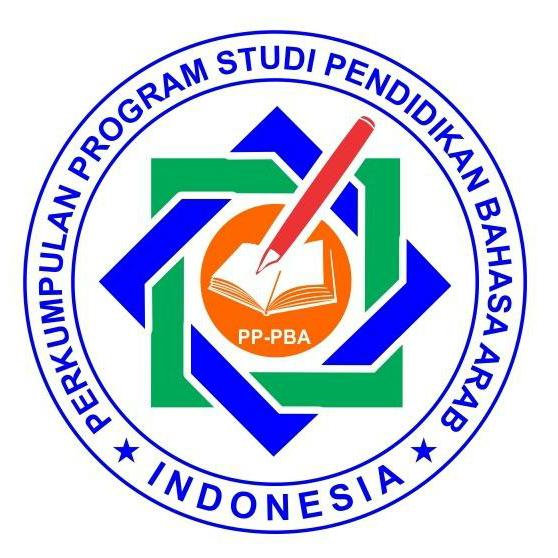Struktur Kepribadian dan Mekanisme Pertahanan Ego Tokoh Utama dalam Naskah Drama Al-Wajhu Al-Muẓlim li Al-Qamar Karya Najib Kailani
Telaah Psikoanalisis Sigmund Freud
DOI:
https://doi.org/10.37680/aphorisme.v1i2.448Keywords:
Freud’s Psychoanalysis, Personality Structure, Ego Defense MechanismAbstract
This article aims to peel the structure of the main character psychological condition and the defense mechanisms of his ego by using Freud's psychoanalysis theory. This is because the drama script has a very complicated problem which is experienced by the main character, Salim, in his life. He had despaired and felt that his life was empty because he got several influences from western culture. The personality structure, according to Sigmund Freud, is divided into three: id, ego and superego. This research is descriptive qualitative research. The result of this research is that personality structure which consists of id, ego and superego was found in Salim's figure. However, the dominating one is the id, then the ego, and the last superego. The researcher can make a hierarchy of personality structure of the main character, Salim, based on his research as (1) the personality structure in the form of id occupies the first level because its appearance is very intense; (2) the personality structure in the form of ego occupies the second level because its appearance is not as much as the id, (3) The personality structure in the form of superego occupies the third level because Salim rarely uses in conscience based on good or bad morality. Meanwhile, the ego defense mechanism found by the researcher in this drama script is (1) repression, (2) displacement or diversion, (3) rationalization, and (4) direct aggression. The others were not found in the drama script. The defense mechanism of the ego displacement becomes one often done by Salim figure to avoid the problem and the psychological conflict that he experienced. The reason is that he diverts feelings of displeasure towards an object to other objects that are more likely to be used as a backrest in the complicated conflict in himself. He considers that the defense mechanism of the ego's displacement felt more secure so as not to add to the complicated problem that he faces.
References
Feist, Jess, & Gregory J. Feist. (2010). Teori Kepribadian. Editor: Melly Astriani. Jakarta: Salemba.
Fudyartanta, Ki. (2012). Psikologi Kepribadian Paradigma Filosofis, Tipologis, Psikodinamik, dan Organismik Holistik. Yogyakarta: Pustaka Pelajar.
Hambali, Adang & Ujam Jaenudin. (2013). Psikologi Kepribadian (Lanjutan) Studi Atas Teori dan Tokoh Psikologi Kepribadian. Bandung: Pustaka Setia.
Jaenudin, Ujam. (2012). Psikologi Kepribadian. Bandung: Pustaka Setia.
Kailani, Najib. (1998). Al-Wajhu al-Mudzlim li al-Qamar. Beirut (Lebanon): Daar Ibnu Hazm.
Latifi, Yulia Nasrul, Dkk. (2006). Metode Penelitian Sastra I. Yogyakarta: Pokja Akademik UIN Suka.
Minderop, Albertine. (2013). Psikologi Sastra Karya Sastra, Metode, Teori dan Contoh Kasus. Jakarta: Yayasan Pustaka Obor Indonesia.
Ratna, Nyoman Kutha. (2008). Teori, Metode dan Teknik Penelitian Sastra. Cet. IV. Yogyakarta: Pustaka Pelajar.
Semium, Yustinus. (2010). Teori Kepribadian dan Teori Psikoanalitik. Yogyakarta: Penerbit Kanisius.
Suryabrata, Sumadi. (2012). Psikologi Kepribadian. Jakarta: Raja Grafindo Persada.
Wellek, Rene & Austin Warren. (2014). Teori Kesusastraan. Jakarta: PT Gramedia Pustaka Utama.
Wiyatmi. (2011). Psikologi Sastra Teori dan Aplikasinya. Yogyakarta: Kanwa Publisher.
Downloads
Published
Issue
Section
License
Authors who publish with this journal agree to the following terms:
Authors retain copyright and grant the journal right of first publication with the work simultaneously licensed under a Creative Commons Attribution-NonCommercial 4.0 International License that allows others to share the work with an acknowledgement of the work's authorship and initial publication in this journal.
Authors are able to enter into separate, additional contractual arrangements for the non-exclusive distribution of the journal's published version of the work (e.g., post it to an institutional repository or publish it in a book), with an acknowledgement of its initial publication in this journal.
Authors are permitted and encouraged to post their work online (e.g., in institutional repositories or on their website) prior to and during the submission process, as it can lead to productive exchanges, as well as earlier and greater citation of published work.





.jpg)


1.jpg)
